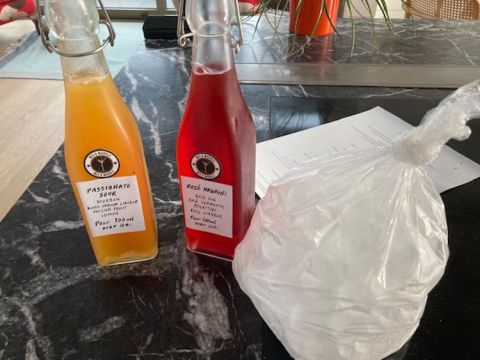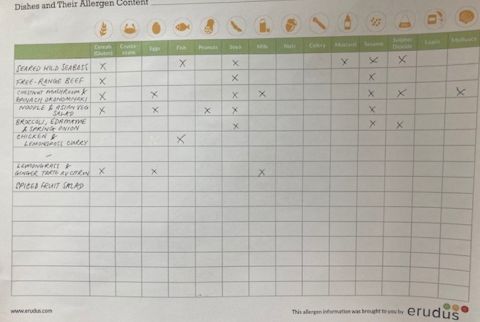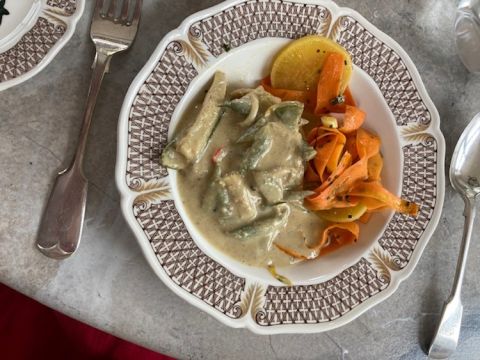Mange, still on the move

Nick writes his first review in nearly four months.
The coronavirus has wrought many changes in many households but in few have the repercussions been as deep-seated, if not perhaps as immediately obvious, as in our home.
To all intents and purposes, the two of us carry on typing as fast as we can, in our separate offices, about our related specialisms. But beneath the surface, our professions have widely diverged over the past three and a half months
Jancis has never been busier. Her website appears to be a virus-proof business. The world’s wine lovers have craved information as never before. And even having foresworn Zoom tastings, she herself seems never to have been in such demand.
This demand has resulted in an even easier working life in some ways. Instead of having to troop off to the Oval, 67 Pall Mall, Vintners’ Hall or to any other location across London where a tasting may be held, samples of everything a wine merchant or producer would like HRH Lady Jancis to taste, now come to her.
Not precisely to her, of course, but to our ground-floor reception where someone, ie me, has to collect them, carry or wheel them up to our top-floor apartment, open the boxes – or carry them into our temperature-controlled 'cellar' – and then open the bottles. Reimbursement comes at the dinner table.
Such opportunities have not presented themselves to me in the world of restaurants. None in the UK is currently open for review and all our travel plans have been scuppered. Consultancy has come to a halt as new buildings and developments have been put on hold. My friend Matt Ashman, head of hospitality at property company Cushman Wakefield, reports that Polly, his obviously perceptive wife, now describes his role as a ‘counsellor’ to his many clients rather than as a more traditional agent. He does describe himself, however, as ‘tentatively optimistic’ about the future of restaurants in the UK which, we are told, may be allowed to open from 4 July.
One other major difference in our fields has come to light. While every winemaker has every year the challenge of a different vintage, no chef or restaurateur faces the same impetus to put what they do under the microscope of a restaurant reviewer. And while what many restaurants now have to offer in terms of their takeaway menu may differ to a very large extent from what they were offering pre COVID-19, a comparison or review of these offerings would probably make little difference.
That was what I thought until earlier this week, when, out of the blue, I received an email from Anthony Issroff from Mange, a catering company which he started in 1993. Mange was successful from the outset, tapping our growing interest in new and different foodstuffs and new and different cooking styles. We used the company to cater for the André Simon Awards for several years. We each then went our own separate ways.
Then he suddenly got in touch. All their corporate work stopped very suddenly in early March without any indication of when it would resume. All their private-client bookings for this summer have been cancelled. And, as Anthony appreciated that they could not compete with restaurants offering meals for two or three people, they thought of something different: fun, healthy meals, for at least five diners, they decided, plus a hassle-free barbecue option. They would also provide pre-mixed cocktails, in our case 100 ml bottles of a pink negroni and whisky sour plus a bag of ice, plus a wine list from Liberty Wines. Would I like to try a delivery, Issroff wondered? We agreed on Tuesday 16 June and a delivery slot of 18.30–19.00.
At 18.29 there was a call on my mobile to say the delivery had arrived. I went downstairs to find Richard, who also claimed the credit for the excellent cocktails, standing beside three large cardboard boxes – the kind normally full of loaves – but full on this occasion of boxes of cooked food, piled high on a set of wheels. This transported up to our apartment what was to turn out to be supper, lunch and breakfast for the next three days.
As I put everything into our fridge, I had to contend with the paperwork. On the top – so 2020 – was a list of the dishes and their allergen content, of which gluten, soya and sesame were the most common.
Then there were a couple of extremely clearly printed menus, which began with the cocktails and ended with dessert: a lemongrass and ginger lemon tart with a spiced fruit salad (that lasted until Friday breakfast). In between came three more main courses: a plate of wild sea bass with a delicious mooli and carrot salad; dishes of rare free-range beef with diced green beans and a chili sauce (the main image); and a vast chestnut, mushroom and spinach okonomiyaki, a Japanese savoury pancake (pictured above). These were accompanied by dishes of a noodle and Asian vegetable salad, enhanced with peanuts, lime, ginger and mint; broccoli, edamame and charred spring onions topped with a miso sesame dressing; and two tubs of a particularly fragrant chicken and lemongrass curry with tamarind, lemon and coriander (below).
If all this seems very Asian, this was because it was Tuesday. Issroff has decided that to provoke interest among his potential customers, and presumably to inspire his chefs, they will offer a different style of cooking each day of the week: on Monday it is Middle Eastern; Tuesday it is Asian; Wednesday is Mexican; Thursday it is British/Scandinavian (a menu that begins with potted shrimps and ends with Danish apple and cinnamon cake); Friday it is Italian; while on Saturdays it is brunchy American.
All this I gleaned from a clearly printed 10-page brochure that listed the menus, some appealing photos of various dishes on the barbecue, a wine list, and their accreditation with MSC (fish approved of by the Marine Stewardship Council) and ASC (the Aquaculture Stewardship Council). With substitutions and plenty of vegetarian options, there is enough choice to keep any party happy.
The quality of the cooking was excellent. Their kitchen has a correct reading on the spicing required, certainly hot enough in the curry and the mooli and carrot salad that accompanied the wild sea bass, if too hot (for us anyway) in the small pots of almost violently hot chili sauce. The beef and noodle dishes were first class as was the dessert. Overall, the meal was of a quality that I would have happily paid the same price for in a restaurant. Their menu prices depend on the number of people: for five to seven guests it is £60 per head, for 15–20 this drops down to £35. For their barbecue menu it is £35 per head for a minimum of 10.
I took the opportunity of asking Issroff about the changes he had witnessed after almost 30 years at the stoves. ‘Less meat, in particular, and far less red meat. More of a focus on healthier, lighter vegetarian, vegan dishes. We catered an event for 200 where the entire menu was vegetarian – unthinkable 20 years ago. And informal communal dining has been much more popular although whether this trend will continue post COVID I just don’t know. And as our clientele has become far more cosmopolitan, we have to be always offering something new.’
This is partly, of course, a reflection of the client base Issroff has established. Issroff was prescient enough to move Mange’s kitchens into Clerkenwell more than seven years ago when it was reasonably inexpensive. Since then this particular district has become a hub for numerous architecture, design, construction and property companies who have today become Mange’s clients and who are keen to be seen to be as environmentally friendly as possible. ‘Hence', Issroff added, ‘our enthusiasm for MSC and ASC dishes and half our vehicles are currently electric and we plan to be 100% electric by the end of the year.’
Mange’s cooking is as exciting as it was 27 years ago when it was called Mange on the Move. There are not many London restaurants that can boast such longevity.
Mange 61 Central Street, London EC1V 3AF; tel +44 (0)20 7263 5000
Become a member to view this article and thousands more!
- 15,401 featured articles
- 274,895 wine reviews
- Maps from The World Atlas of Wine, 8th edition (RRP £50)
- The Oxford Companion to Wine, 5th edition (RRP £50)
- Members’ forum
- 15,401 featured articles
- 274,895 wine reviews
- Maps from The World Atlas of Wine, 8th edition (RRP £50)
- The Oxford Companion to Wine, 5th edition (RRP £50)
- Members’ forum
- Commercial use of our Tasting Notes





